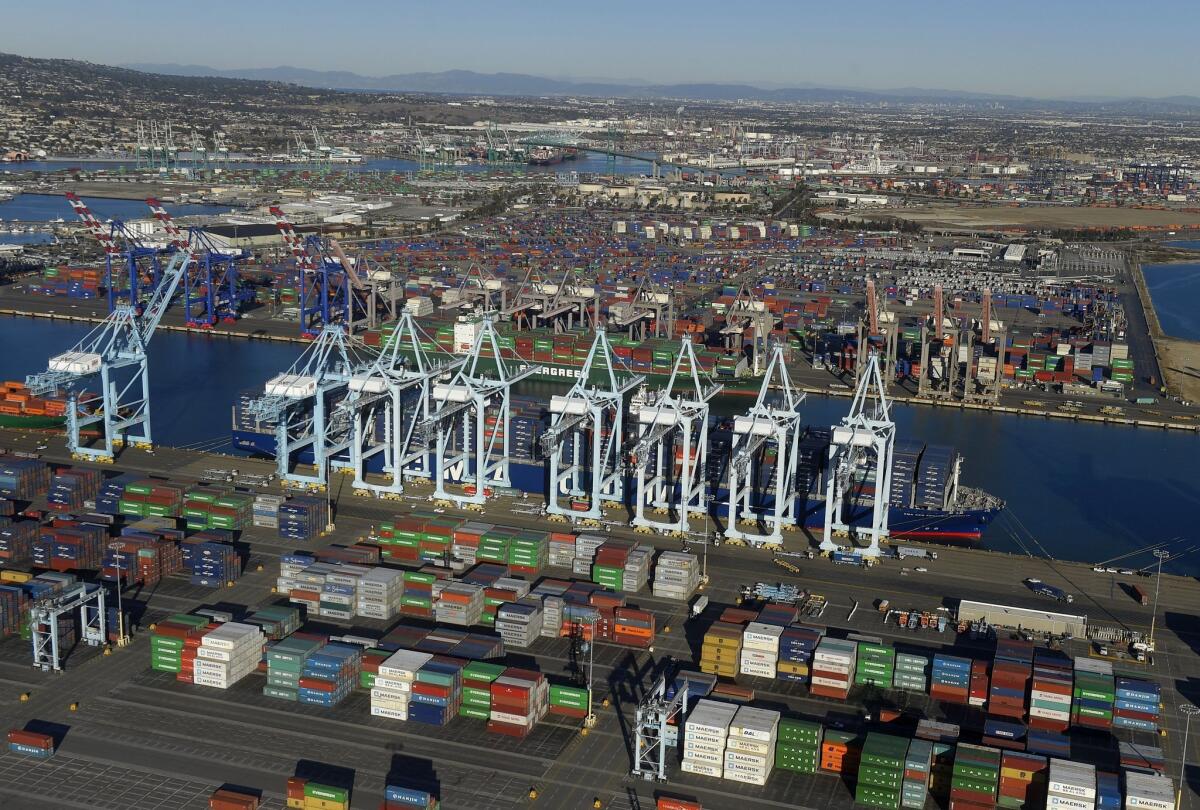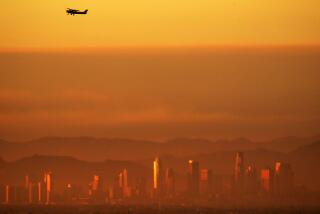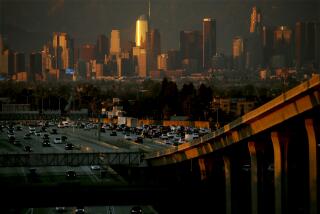Editorial: L.A. needs fewer platitudes and more action on port air pollution

The largest container ship to ever make port in North America, the CMA CGM Benjamin Franklin, unloads its cargo in the Port of Los Angeles in San Pedro on Dec. 26, 2015.
When Port of Los Angeles leaders approved the environmental impact report for the China Shipping company’s terminal in 2008, the Harbor Commission chairman at the time boasted that the project would be among the cleanest and greenest terminals in the world. Months later, however, port officials quietly waived some of the most ambitious pollution-cutting mandates, including a requirement that docked ships plug into electric power instead of idling their dirty diesel engines and another that trucks and yard equipment switch to cleaner fuels.
The secret concessions made by port officials under former Mayor Antonio Villaraigosa were revealed last year, infuriating neighbors of the port and clean-air advocates. This week, port officials raised hackles again by disclosing that they had allowed a second terminal operator to skirt pollution-reduction requirements. An audit found that ships docking at the TraPac terminal plugged into shore power only 53% of the time in 2015, well below the mandate of 80%. And the terminal operator did not have all yard equipment running on modern, clean diesel equipment by 2014, as required. Port officials blamed the missed targets on construction and a labor-related dispute, and TraPac called it a “one-time shortfall.”
But TraPac’s failure to comply was disclosed only after the China Shipping debacle came to light. And the fact that two terminals accounting for one-third of the port’s container traffic were allowed to ignore clean-air measures raises serious questions about whether the Port of Los Angeles and city leaders can be trusted to follow through on their environmental commitments.
The port complex, which includes the Port of L.A. and the Port of Long Beach, is the single largest source of air pollution in the region, with trucks and ships spewing smog-forming pollutants and cancer-causing diesel particles. But international trade is also a major economic engine and job creator for the region, and the L.A. port complex is in constant competition with other ports for shipping business. Balancing the need for continued growth with the need for cleaner operations is a real challenge that demands leadership, not platitudes about being the cleanest and greenest.
Mayor Eric Garcetti and his port general manager have promised to make good on clean-air obligations, but they have to do more than promise. They need to adopt strong air pollution controls, hold terminal operators to the requirements and agree to independent-third party monitoring. And they should push for modern, cleaner technology and pollution-cutting commitments throughout the shipping and goods movement industry, so Southern Californians don’t have to sacrifice air quality for economic growth.
Follow the Opinion section on Twitter @latimesopinion and Facebook
More to Read
A cure for the common opinion
Get thought-provoking perspectives with our weekly newsletter.
You may occasionally receive promotional content from the Los Angeles Times.






